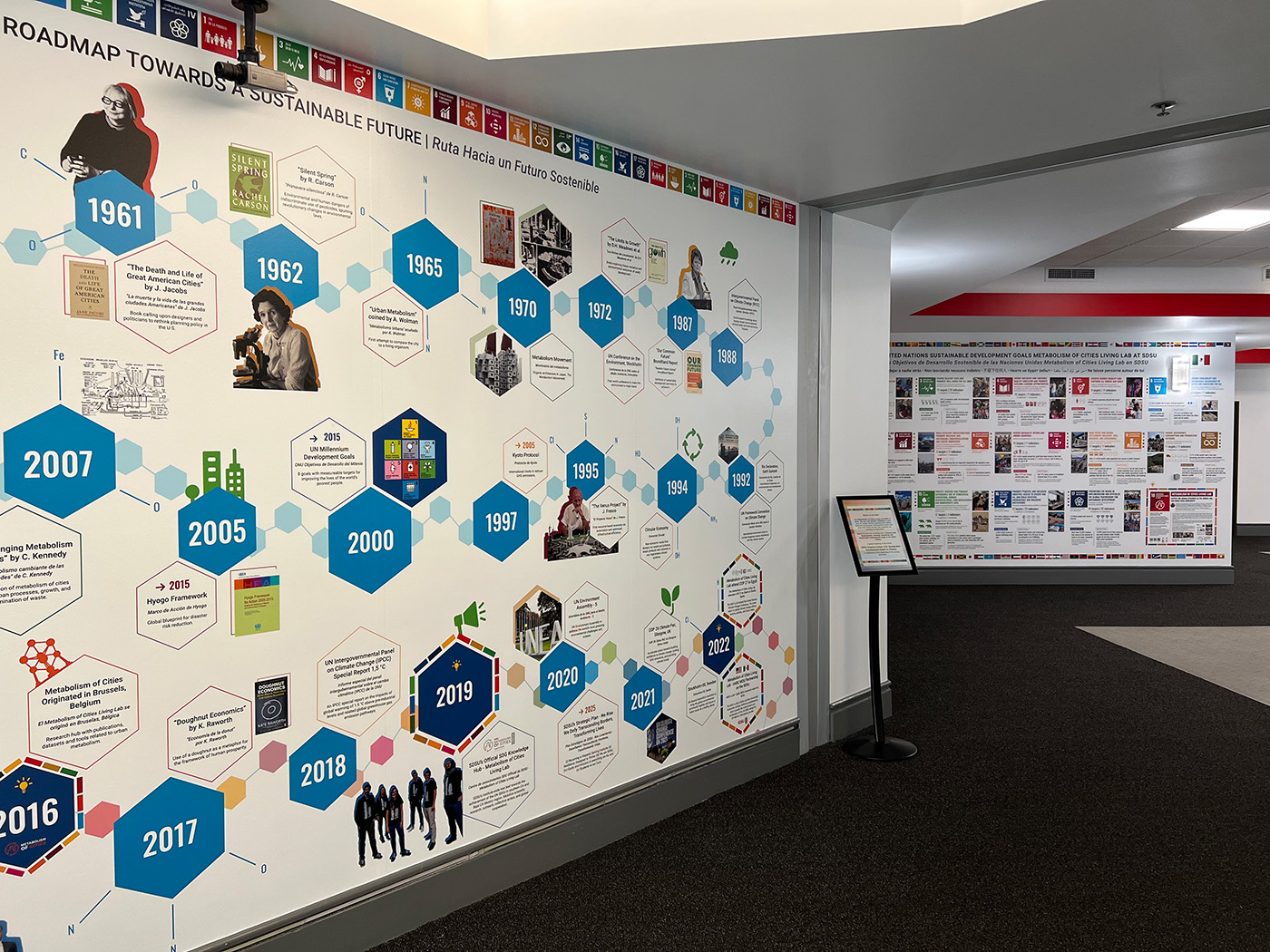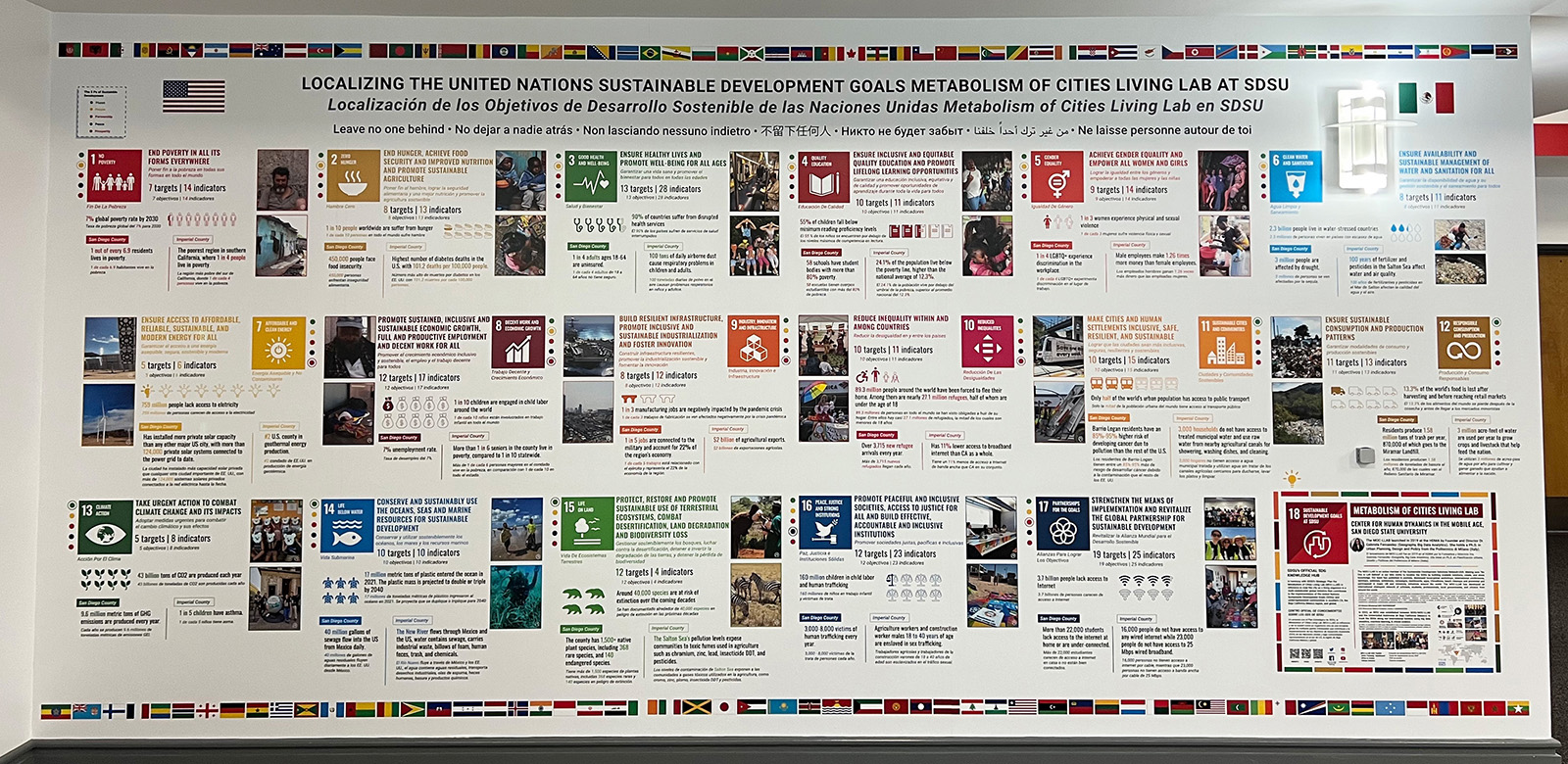Metabolism of Cities Living Lab - SDSU 4 SDGs "Leave No One Behind" Exhibition
The Metabolism of Cities Living Lab-SDSU 4 SDGs “Leave No One Behind” exhibition covers four walls of the library's Donor Hall and includes a timeline of U.N. Sustainable Development Goals, the seventeen goals, the work of the Metabolism of Cities Living Lab under the Center for Human Dynamics in the Mobile Age at SDSU, and a responsive art mural. The mural was created by Fernandez and students from the SDSU Art program and Master of Science in Big Data Analytics. It has been created on wallpaper and will be on exhibit physically and remotely throughout the current academic year.

The exhibition has been spearheaded and designed by Gabriela Fernandez, director of the Metabolism of Cities Living Lab, adjunct faculty, and graduate advisor of the Master of Science in Big Data Analytics Program, SDSU Department of Geography, with support from both the College of Arts and Letters and the University Library, especially library graphic designer Dania Mukahhal.
Monica J. Casper, former Dean of Arts and Letters, stated, “We could not be more excited to support this innovative, interdisciplinary collaboration. As both dean and a scholar who has written on the Millennium Development Goals - which preceded the SDGs - I know how important such international benchmarks are to human (and nonhuman) flourishing. I hope the exhibition will draw participants from within our campus community and well beyond.”

Using art, statistics, research, and photography, this exhibit explores the subtle and profound impact of the UN Sustainable Development Goals that underserved communities experience. By sharing stories of underserved communities in the Southern California and Baja California regions, the exhibit opens up a larger discussion about those who are affected along the U.S.-Mexico border.

In keeping with the “Leave No One Behind” theme, the exhibit is presented in both the English and Spanish languages. A 3-D virtual experience is also being developed by Aurora Velasco and her team in Instructional Technology Services, using Matterport software to allow users to view the exhibition from the comfort of their own home.
I want to educate the SDSU community about the importance of the UN SDGs and the impact that one person can have on another. I want to encourage young people to be future leaders, and advocates for their own communities, and stand up for what they believe in while considering the different perspectives/differences, and needs of people from all around the world - people with disabilities, children, ethnic minorities, the LGBTQ+ community, people who are homeless or refugees, students and academics, Indigenous people, women, etc. My vision to localize the UN SDGs is to make sure no one is left behind on both sides of the border in the U.S. and Mexico by including all members of society while pinpointing the various environmental, social, and economic opportunities and challenges faced/given along our U.S.-Mexico international border.
The Metabolism of Cities Living Lab is an analytical data refinery think tank that believes in revolutionizing and democratizing big data. The researchers involved aim to make data accessible and personable in all sectors of society. The MOC-LLAB is hosted by the Center for Human Dynamics in the Mobile Age in the Department of Geography at SDSU. Their vision is to “Strengthen Diversity and Deliberation in Climate Adaptation Planning,” with the overarching goal to view the city as a living organism and build on the SDSU strategic plan through community engaged research, technology development/deployment, nature-based solutions, data analytics, data science approaches, and citizen science.